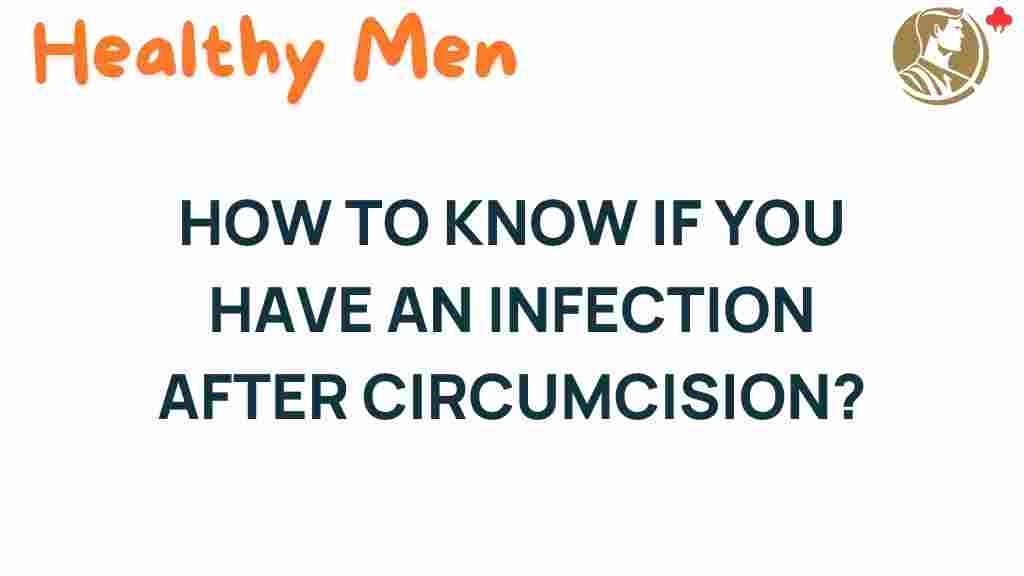Unveiling the Signs: How to Detect an Infection After Circumcision
Circumcision is a common surgical procedure performed on newborn males and sometimes on older children and adults for various cultural, religious, or medical reasons. While circumcision is generally safe and presents minimal risks, infections can occur post-surgery. Understanding the signs and symptoms of infection is crucial for ensuring a smooth recovery and maintaining good health. In this article, we will explore how to detect an infection after circumcision, focusing on the signs, symptoms, wound care, and essential health advice.
Understanding Circumcision and Its Recovery
Circumcision involves the removal of the foreskin from the penis. This procedure can lead to a range of outcomes, and while many recover without complications, some may experience infections that require attention. Proper recovery is essential, and understanding the signs of infection can help in taking timely action.
Signs and Symptoms of Infection
Detecting an infection early can prevent complications and promote faster recovery. Here are some of the most common signs and symptoms to watch for after circumcision:
- Redness: Increased redness around the surgical site can indicate inflammation.
- Swelling: While some swelling is normal, excessive swelling may be a sign of infection.
- Pain: Persistent or worsening pain in the area may suggest an underlying issue.
- Discharge: Any unusual discharge, particularly if it is yellow or green, should be monitored.
- Fever: A moderate to high fever can be an indication of systemic infection.
- Odor: Foul-smelling discharge or odor from the area can signal infection.
If you notice any of these symptoms, it’s essential to consult a healthcare professional for further evaluation.
Step-by-Step Recovery Process After Circumcision
Recovering from circumcision involves several critical steps that contribute to healing and preventing infection. Here’s a breakdown of what to expect and how to care for the area:
1. Initial Care
Immediately after circumcision, follow your healthcare provider’s instructions closely. Here are essential care guidelines:
- Keep the area clean and dry.
- Use a gentle cleanser and warm water to clean the area.
- Apply any prescribed ointments as directed.
2. Wound Care
Effective wound care is vital for preventing infections:
- Change any dressings as recommended.
- Avoid applying any topical medications not prescribed by your doctor.
- Monitor for any signs of infection (as listed above).
3. Pain Management
Over-the-counter pain relievers like acetaminophen or ibuprofen can help manage discomfort. However, always consult with your doctor before taking any medication.
4. Hygiene Practices
Maintaining male hygiene is crucial during recovery:
- Gently wash the area daily.
- Avoid tight-fitting underwear that may cause irritation.
- Wear breathable fabrics to reduce moisture.
Troubleshooting Tips for Post-Circumcision Care
If you suspect an infection or notice any troubling symptoms, here are some troubleshooting tips:
- Consult a healthcare professional: If in doubt, seek medical advice promptly.
- Keep a symptom diary: Note any changes in symptoms to provide a clearer picture to your doctor.
- Follow up: Attend all post-operative appointments to monitor healing.
When to Seek Medical Advice
While minor discomfort is often expected, certain situations warrant immediate medical attention:
- High fever above 101°F (38.3°C).
- Severe swelling or redness that spreads.
- Any discharge that is increasing in amount or has an unpleasant odor.
- Uncontrolled pain that does not improve with medication.
It’s essential to prioritize your health and well-being. If you experience any of these symptoms, do not hesitate to seek help.
Long-Term Health Considerations
After recovery from circumcision, maintaining good health practices is crucial. Here are some long-term health considerations:
- Regular check-ups with your healthcare provider.
- Practicing good hygiene consistently.
- Being aware of any changes in the area and reporting them to a doctor.
Educating yourself about the health implications of circumcision and proper care can lead to a better understanding of your body and its needs. For more information on post-operative care, visit this resource.
Conclusion
Circumcision is a widely practiced procedure with generally positive outcomes when proper care is taken. However, being vigilant about the signs of infection is crucial for ensuring a smooth recovery. By understanding the symptoms, following wound care instructions, and maintaining good hygiene practices, you can significantly reduce the risk of complications.
Always prioritize your health and seek medical advice whenever necessary. Remember, effective communication with your healthcare provider is essential in navigating any concerns during the recovery process. For additional support and resources, consider checking out this article on male hygiene and post-operative care.
In summary, being proactive and informed is your best defense against potential infections after circumcision. Stay aware, stay healthy, and don’t hesitate to reach out for help when you need it.
This article is in the category Conditions and created by healthymen Team
